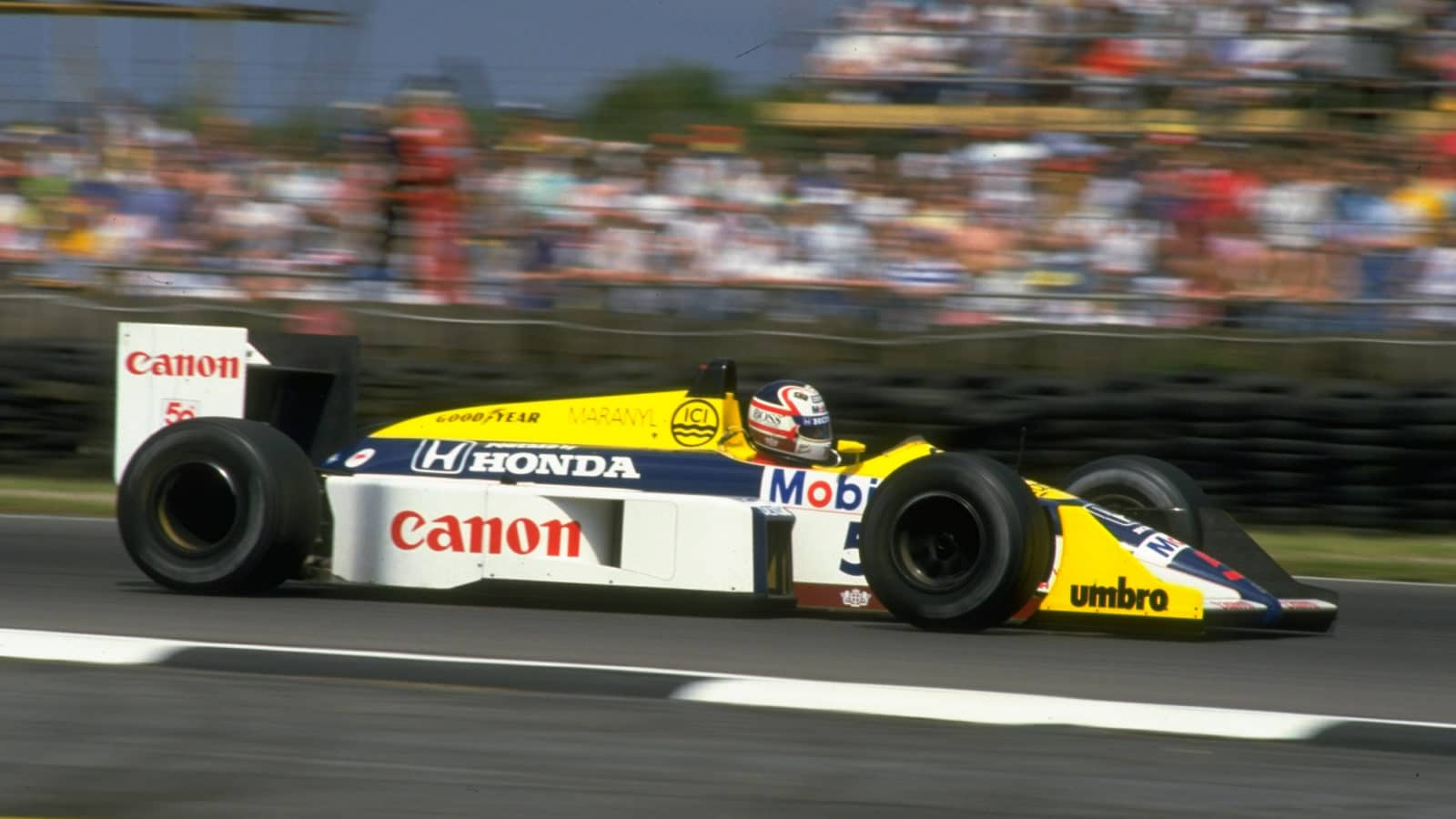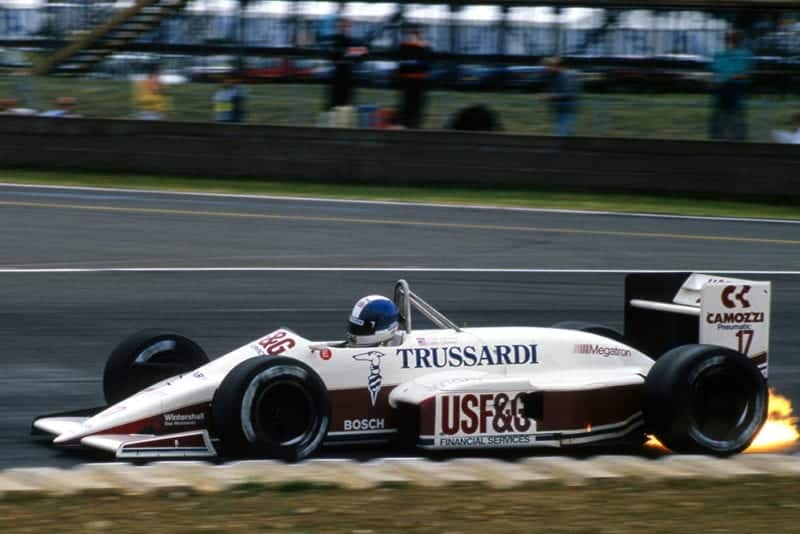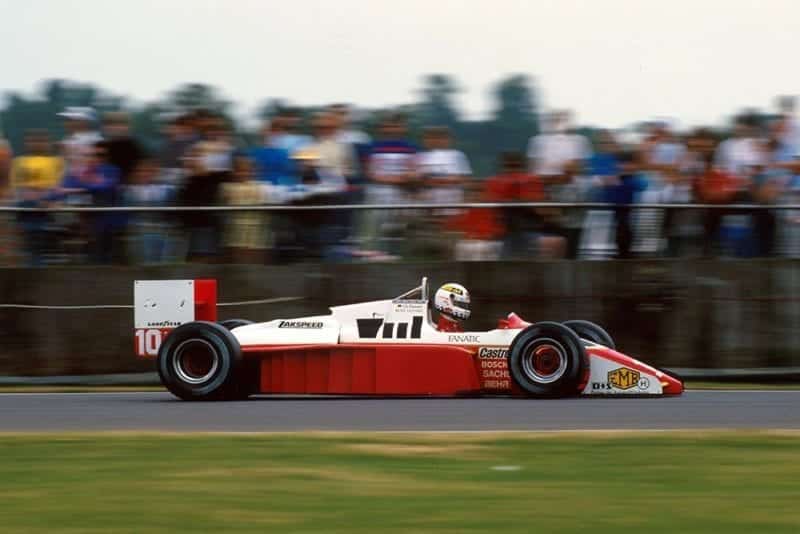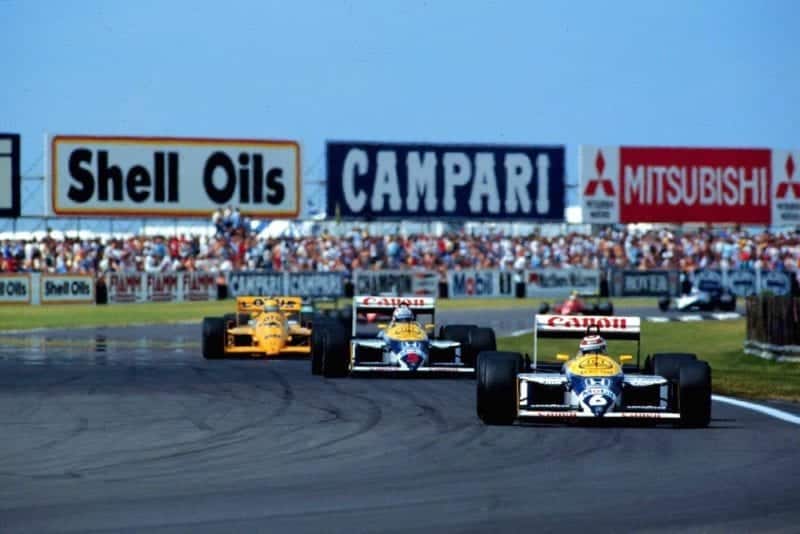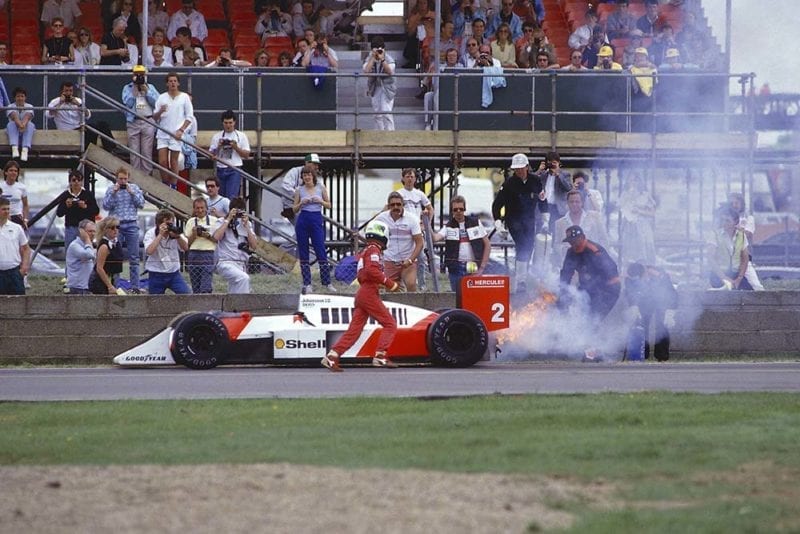After about 15 laps Mansell was aware of vibrations coming through the car from the road, due to an out of balance tyre, or uneven tyre wear, and as the halfway point arrived he made the decision to stop for new tyres. This added only 20 seconds to lap 36, so he did not lose his second place. Piquet was obviously going to go through non-stop, which would mean he would be getting short of rubber and grip in the closing stages, but hopefully he would have enough time in hand.
Mansell was straight back onto the pace after his stop, lapping at under 1 min 12 sec while Piquet was lapping at over 1 min 12 secs. They both speeded up, but Mansell was gaining at about 1 second a lap, so he threw all caution to the wind, ignored his fuel-consumption read-out and gave it all he had.
As he got closer and closer to Piquet the instrument panel was telling him he would never get to the finish but would run out of fuel, but he decided it was going to be “all or nothing”. It was a total gamble and as they took Stowe Corner on lap 63, with 21/2 laps to go, Mansell got by into the lead. The patriotic supporters all round the circuit let out a roar that was reminiscent of the “good old days” at Imola when Ferrari used to win. Mansell had set up a new all-time lap record for Silverstone on lap 58 in 1 min 09.83sec (153.059 mph), and Piquet could only respond with 1min 10.632sec on lap 62.
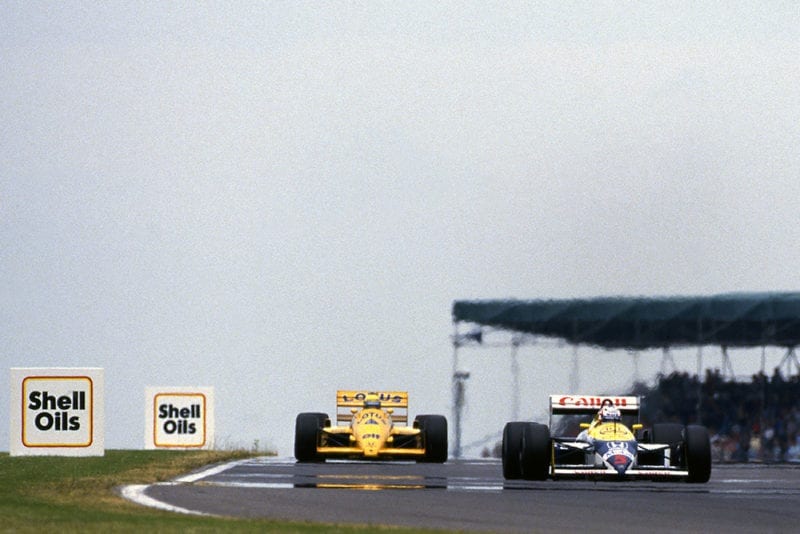
Mansell leads Senna
Motorsport Images
As Nigel Mansell took the chequered flag his fuel-consumption reading had gone beserk, and half-way round his slowing-down lap the engine died. His tank was completely dry, but it didn’t matter, his gamble had paid off.
It was a rather “miffed” Nelson Piquet who was the first one to complete the slowing-down lap, having to thread his way cautiously through the thousands of spectators who flooded the track to greet Mansell. For many of them he never arrived, since he eventually came round in a course marshals van, and he was gone by before anyone realised what had happened. At the finishing line he was suitably acclaimed.
In a very distant third place came Ayrton Senna, having driven his Lotus 99T as fast as the Lotus engineers could allow him, but it was nothing like good enough to even keep the Williams cars in sight.
“It had been a splendid race in the midst of a fantastic fiesta of speed and action”
With stars such as Prost, Alboreto, Berger and Johansson falling by the wayside, the Japanese driver Saturo Nakajima in the second Lotus arrived in fourth place. He was two laps behind the Williams pair, and one lap behind Senna, but it was a praiseworthy drive for the man from Japan in his first Grand Prix at Silverstone. More important was the fact that his drive into fourth place gave Honda a running-flush of 1st/2nd/3rd/4th, though unlike Alfa Romeo or Mercedes-Benz in the “good old days”, Honda needed two separate teams to achieve the 1-2-3-4.
It had been a splendid race in the midst of a fantastic fiesta of speed and action, and even if the traffic jams lasted well into the evening, everyone must have enjoyed it. With a race-day attendance of over 100,000, and untold millions of television watchers paying money into the FISA/FOCA kitty (I hope), the RAC Motorsports Association and their thousands of helpers must have felt it was all very much worthwhile.
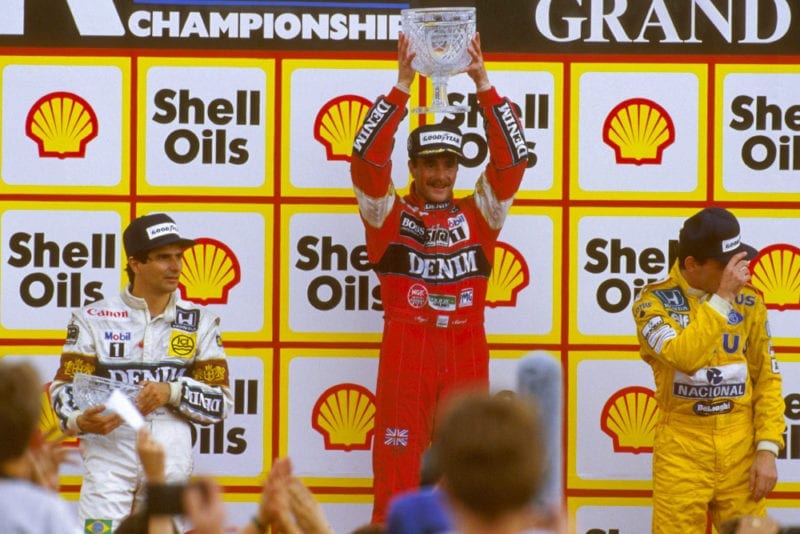
A victorious Mansell holds the trophy aloft, flanked by Piquet (left) and Senna
Motorsport Images
